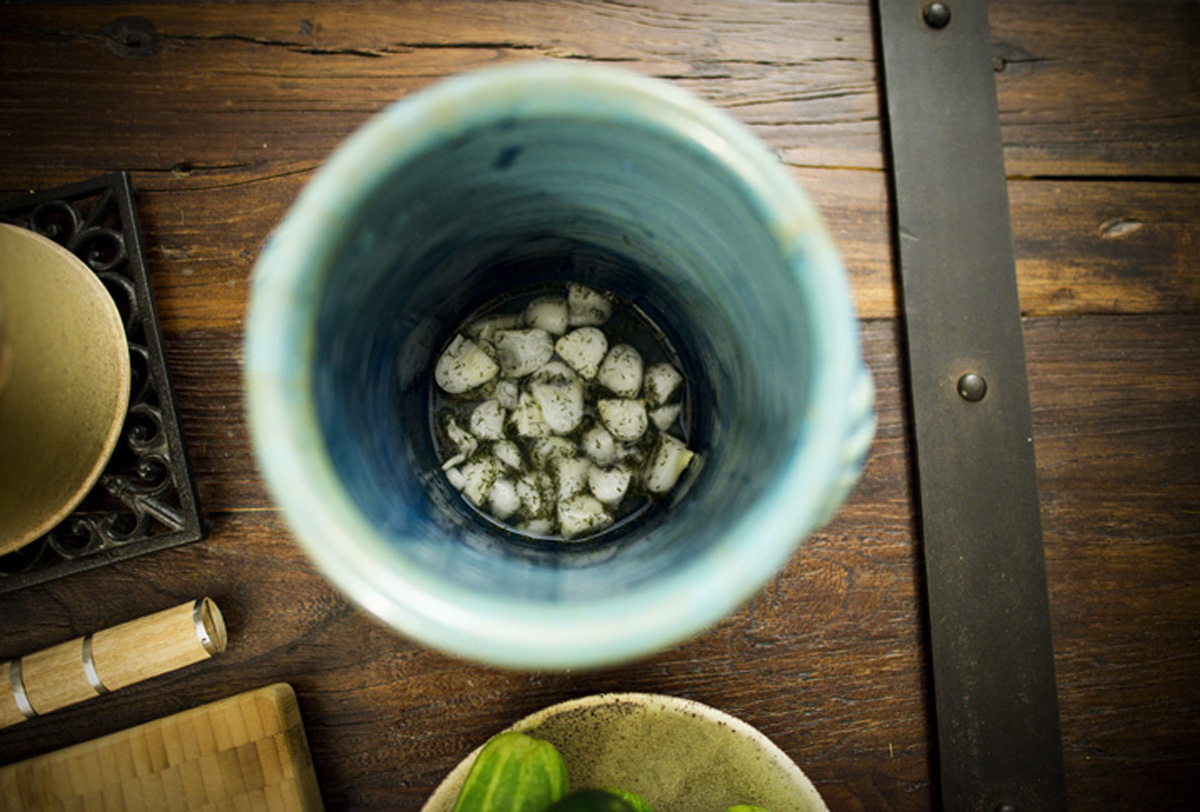A Local Artist Embraces Fermentation Through Pottery
Bacteria is everywhere—it lurks on every surface you touch, the food you eat, and floats through the air. But while some bacteria can make you sick, there’s also a variety of beneficial bacteria. Enter: probiotics.
These probiotics can be found in the latest health craze: fermented foods. These items—such as sauerkraut, kombucha, and pickles—are the result of bacteria breaking down the carbohydrates in the food. A recent study, published in Psychiatry Research, found that the probiotics in fermented food may even help ease anxiety. In the study, people who consumed large amounts of fermented foods saw a reduction in social anxiety and nervousness, possibly suggesting a positive relationship between probiotics and gut chemicals that influence mood. Because this healthy bacteria lives primarily in your gut, it may also support energy absorption, improved digestion, and a healthy immune system.
As the knowledge about beneficial bacteria increases, so do the amount people who are fermenting at home, including local ceramicist, Jeremy Ogusky, a.k.a., The Boston Potter.
Six years ago, the local potter and owner of Ogusky Ceramics combined his ceramic talent and taste for funky foods to create clay crocks that would hold his fermentation projects.
“Because I’m a potter, the first step was to make a fermentation crock. Then I started fermenting simple things, like sauerkraut and pickles, and it just grew from there,” Ogusky says.
Once he began selling the crocks, people wanted to know how to use them and how to ferment their own foods. From this curiosity emerged his fermentation workshops, kraut mobs, and even an annual Fermentation Festival.
https://instagram.com/p/uTFq7pLgeq/?taken-by=bostonpotter
Ogusky says that the fermentation craze is a result of three things: health benefits, the DIY movement, and the general curiosity about unique flavors. People are only recently beginning to explore fermentation in the food world, he says, including its connection to wellness.
“Fermenting is something that a lot of cultures and health practitioners have done for a long time,” Ogusky says. “There’s been herbalists and nutritionists who have been talking about having a diverse and healthy gut for thousands of years. Only recently has science caught up.”
But there’s more to fermentation than just a happy belly. “It’s about the connection between the vessel you’re using, the food that you’re making, and the building of the community,” Ogusky says. “Fermentation allows you to connect with a larger community of people.”
Want to make some fermented foods on your own? Start with the basics, and try vegetables first. You can use any jar or crock to begin, but because dangerous bacteria need oxygen to survive, you must follow the most important rule: ferment in an anaerobic—or oxygen-free—environment.
Ogusky encourages people to use their senses when experimenting, so be sure to smell and taste the vegetables as they ferment. The process is unique to every individual. “Trust yourself,” he says. “Start with small batches. Be brave.”
To get started, try out Ogusky’s basic sauerkraut recipe:
Basic Sauerkraut
Materials: 1 gallon crock or jar, 5 pounds of cabbage, 3 tablespoons sea salt, additional vegetables of your choice.
Directions: Begin by chopping the cabbage and sprinkling it with salt as you chop. The salt will draw the water out of the cabbage, which creates the brine. Place the cabbage in a bowl. Chop any additional vegetables that you would like and add them to the bowl. Mix the vegetables together until there’s a good amount of brine at the bottom of the bowl. Once this is done, pour the mixture into a jar or crock, stuff tightly, and cover. To get the most brine release from the cabbage, place a weight on top of the jar or crock. Let it sit for a day or two, taste, and based on your personal preference you can either eat it then or continue to let it ferment until it’s at its desired flavor.
For more of Jeremy Ogusky’s original recipes and pottery, check out his fermentation blog and website.



